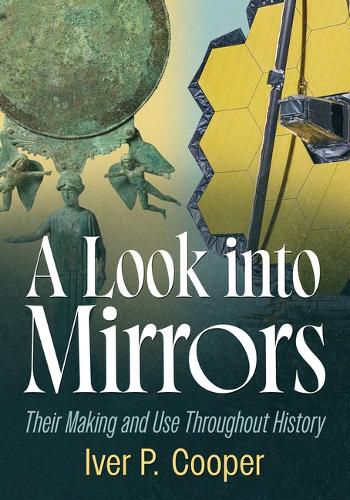Readings Newsletter
Become a Readings Member to make your shopping experience even easier.
Sign in or sign up for free!
You’re not far away from qualifying for FREE standard shipping within Australia
You’ve qualified for FREE standard shipping within Australia
The cart is loading…






Sometime in the distant past, a human being noticed his or her reflection in a body of water. And unlike almost all other animals, that person perceived that the reflection was of his or her own body. It was, perhaps, love at first sight.
Over the course of several millennia, humans learned how to make that reflection portable, first by polishing stone and metal, then by bonding a metal of some kind to the back of a clear glass or plastic. As the reflections became clearer and brighter, people discovered that the mirror could be used for more than just self-inspection: to extend our vision, in periscopes, telescopes, microscopes, and cameras; for communication, in heliographs, photophones, and the mirror galvanometers of undersea telegraph cables; for amusement, in kaleidoscopes and stage illusions; in solar furnaces and sunlight-propelled spacecraft; and in many additional ingenious devices. This book presents the story of how mirrors were made and how they were used, for work and play.
$9.00 standard shipping within Australia
FREE standard shipping within Australia for orders over $100.00
Express & International shipping calculated at checkout
Sometime in the distant past, a human being noticed his or her reflection in a body of water. And unlike almost all other animals, that person perceived that the reflection was of his or her own body. It was, perhaps, love at first sight.
Over the course of several millennia, humans learned how to make that reflection portable, first by polishing stone and metal, then by bonding a metal of some kind to the back of a clear glass or plastic. As the reflections became clearer and brighter, people discovered that the mirror could be used for more than just self-inspection: to extend our vision, in periscopes, telescopes, microscopes, and cameras; for communication, in heliographs, photophones, and the mirror galvanometers of undersea telegraph cables; for amusement, in kaleidoscopes and stage illusions; in solar furnaces and sunlight-propelled spacecraft; and in many additional ingenious devices. This book presents the story of how mirrors were made and how they were used, for work and play.